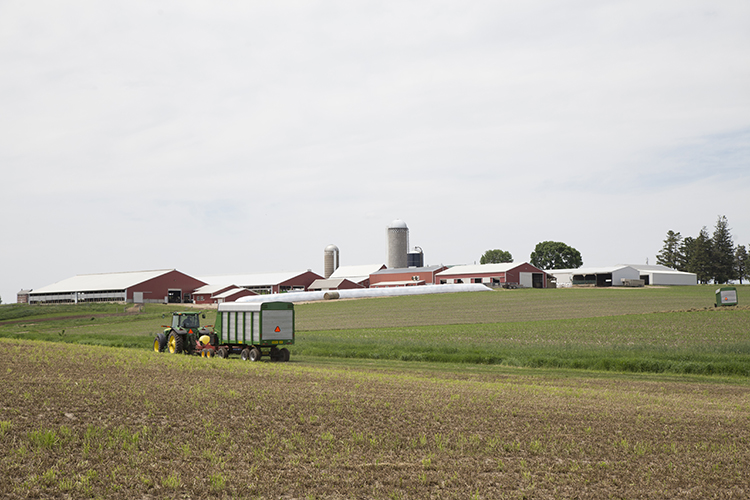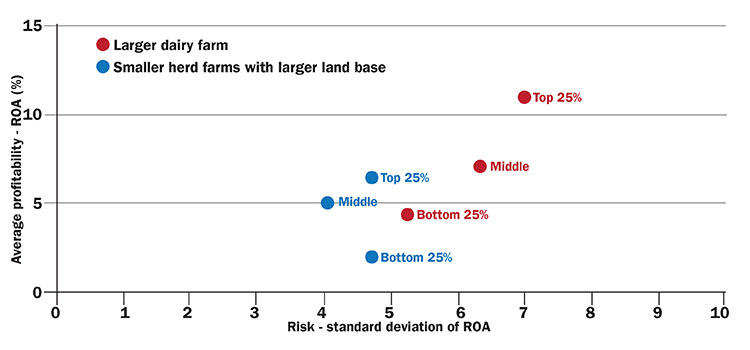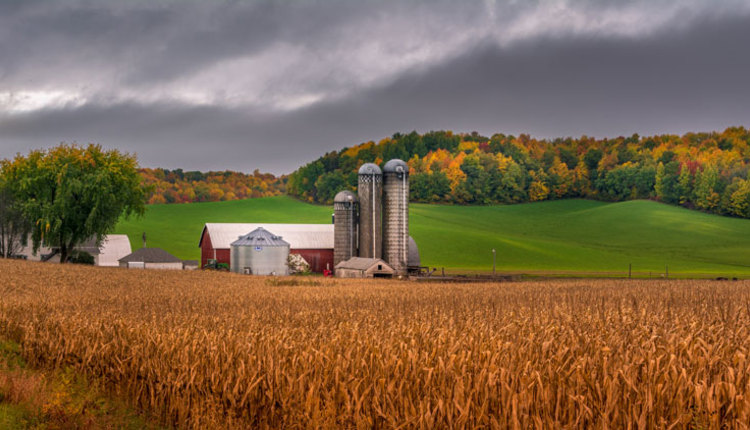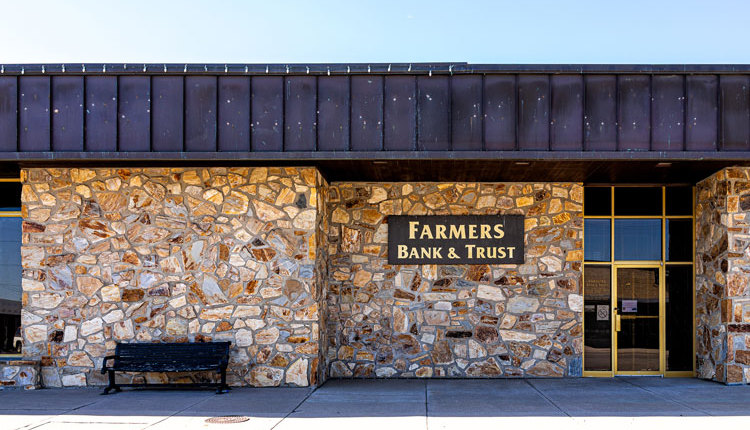The author is a farm management specialist for the UW-Extension Center for Dairy Profitability.


In most business, a key factor to consider is the trade-off risk and return. That is, how much risk one must bear in order to get higher returns on investment. This concern should also be on every dairy operator’s radar given the current economic context.
We look at this trade-off for two different types of dairy farms in the Midwest over the period from 2004 to 2015.A first dairy farm milks an average of 500 cows and crop farms less than 2 acres per cow. The second dairy farm has 100 cows and close to 4 acres of land per cow.
The figure below shows the return as measured by the average return on asset (ROA) over the period from 2004 to 2015, and the risk as measured by the variability of the return over the same period. 

Comparing the most profitable farms (top 25 percent farms) of each farm type shows that larger dairy farms offer greater returns but also carry larger risk than smaller farms.
The higher profitability is largely attributed to a more intensive use of assets, as they generate more revenue per dollar invested in land, buildings, and equipment. But those larger farms also tend to carry a larger debt load, bringing higher financial risks. On the other hand, whether it’s through diversification of their production between crops and dairy or other risk management tools, smaller herd farms get a more stable, albeit lower, profit. Within the large farm category, the less profitable farms (middle and bottom 25 percent groups) also tend to show lower risk. This could reflect different levels of managerial ability and risk preference.
As for the smaller dairy farms, those in the bottom 25 percent are clearly suboptimal. Not only do those farms generate lower average profits, those same farms are exposed to relatively high levels of risks. The fact that they have reported low-average profits over a period of 10 years raises questions regarding their long-term viability and the possibility to successfully transfer those farms to future generations.
Which strategy is best suited for long-term success for you and your farm?
To comment, email your remarks to intel@hoards.com.
(c) Hoard's Dairyman Intel 2016
November 7, 2016








